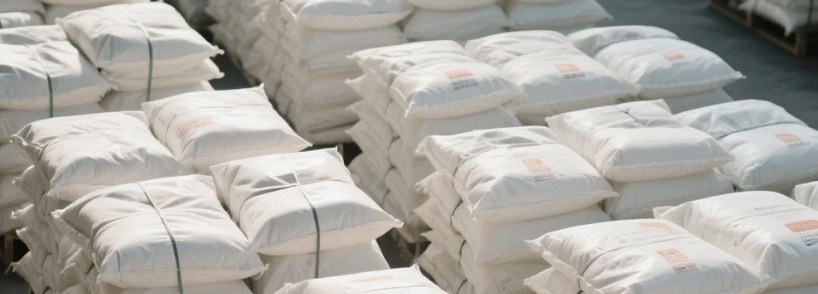What Will the Future Silicone Industry Scale Be?
2025-10-14
The future market size of the silicone industry will continue to expand driven by multiple factors, though forecasts vary among institutions due to differences in statistical scopes and regional focuses. Below is a comprehensive analysis based on authoritative data:
I. Global Market Size Forecast
1. Core Forecast Range
Grand View Research (GVR): The global silicone market size reached USD 21.33 billion in 2023 and is projected to hit USD 32.26 billion by 2030, with a Compound Annual Growth Rate (CAGR) of 6.0%. This growth is primarily driven by demand from the electronics, new energy, and medical sectors.
By 2025, the global market size is expected to reach USD 28 billion, and surpass USD 42 billion by 2030, achieving a CAGR of 9.5%. Segments like new energy vehicles and photovoltaic encapsulants will grow at over 20%.
Docin.com: The global market size may reach USD 58.5 billion by 2030, with China’s share rising to 41%.
2. Key Driving Factors
Boom in the New Energy Sector: By 2030, the global installed photovoltaic (PV) capacity is expected to exceed 2,000 GW, driving demand for PV encapsulants to 620,000 tons (accounting for 24% of total silicone output). The silicone usage per new energy vehicle is 7 times that of traditional fuel vehicles, with demand for power battery sealants and thermal conductive materials growing at 40% annually.
High-End Advancement in Electronics and Medical Fields: 5G base stations and AI servers are fueling 25% annual growth in demand for high thermal conductivity silicone greases (thermal conductivity ≥ 6W/m·K). Medical-grade silicone rubbers (e.g., materials for artificial heart valves) have a unit price 15 times that of conventional products.
Policy and Environmental Upgrades: The EU’s REACH regulation restricts the use of D4/D5/D6, forcing enterprises to switch to low-residue raw materials. China’s “Dual Carbon” policy promotes the coal-power-silicone integrated model, aiming to control the industry’s total carbon emissions within 42 million tons by 2025.
II. Strengthening of China’s Dominant Position in the Market
1. Production Capacity and Consumption Scale
Global-Leading Production Capacity Share: China’s silicone production capacity reached 3.44 million tons in 2024 (accounting for 76% of the global total) and is expected to hit 4.05 million tons by 2030, with its global share rising to 68.8%.
Upgraded Consumption Structure: Domestic silicone consumption reached 2.05 million tons in 2024 and is projected to exceed 3.45 million tons by 2030. The share of demand from the new energy sector will increase from 12% (2020) to over 35%.
2. Regional Layout and Policy Support
Concentration of Production Capacity in Central and Western China: Leveraging advantages in low electricity prices (0.2-0.3 CNY/kWh) and metallic silicon resources, Xinjiang and Yunnan will see their production capacity share rise from 20% (2025) to 30% by 2030.
Policy-Oriented High-End Development: The Silicone Industry Standard Conditions (2025 Edition) requires new monomer projects to have a scale of ≥ 300,000 tons/year, driving the share of fumed silica production capacity to over 60%.
III. Growth Highlights in Segmented Markets
1. New Energy Sector
PV Encapsulants: Demand will exceed 620,000 tons by 2030. Weather-resistant Liquid Silicone Rubber (LSR) for double-glass modules will grow at 42% annually, adapting to new technologies like perovskite tandem cells.
New Energy Vehicles: The market size of power battery sealants and thermal conductive potting compounds will reach CNY 8.5 billion by 2025 and surpass CNY 30 billion by 2030. Demand for silicones used in intelligent driving sensors will grow at over 30%.
2. High-End Manufacturing and Medical Sector
Electronic-Grade Materials: The localization rate of low-dielectric silicone rubbers (Dk < 2.8) for 5G base stations and semiconductor encapsulants (purity 99.999%) will increase from 37% to 50%.
Medical-Grade Products: The market size of biocompatible silicones (e.g., FDA-certified dressings) is expected to reach USD 5 billion by 2030, with materials for artificial heart valves entering the clinical stage.
3. Circular Economy and Green Transition
Chemical Recycling Technology: Bluestar Elkem’s low-temperature depolymerization technology (40℃) converts silicone waste into chlorosilanes, reducing energy consumption by 65%. Hesheng Silicon Industry plans to build a 100,000-ton/year recycled silicone production line by 2027, with the cost of recycled materials 15%-20% lower than that of virgin materials.
Bio-Based Materials: Eco-friendly products such as bio-based silicone oils (50% renewable raw materials) and solvent-free silicone resins have become R&D hotspots. The EU’s Sustainable Chemicals Strategy requires new materials to pass Safety-by-Design (SSbD) assessment.
IV. Risks and Challenges
Overcapacity Pressure: China’s silicone capacity utilization rate was only 65.5% in 2024, with an additional 100,000 tons of capacity to be added in 2025, requiring vigilance against periodic price fluctuations.
Raw Material Volatility: The price of metallic silicon fluctuated by 35% in 2024, and the stability of energy supply in Xinjiang and Yunnan directly affects costs.
International Trade Barriers: The EU’s Carbon Border Adjustment Mechanism (CBAM) is expected to increase export costs by 3%-5%, forcing enterprises to adopt low-carbon processes.
V. Conclusion
Overall, the global silicone market size is projected to range from USD 32 billion to USD 58.5 billion by 2030. China, supported by its production capacity advantages and policies, will account for nearly 70% of the global market share. High-end sectors such as new energy, electronics, and medical care are the core drivers of growth, while green technologies and the circular economy will reshape the industry’s competitive landscape. Enterprises need to focus on R&D of high-value-added products and expand into emerging markets such as Southeast Asia and the Middle East to cope with increasingly stringent environmental requirements and global challenges.

Previous:
Recommend News

